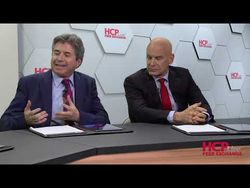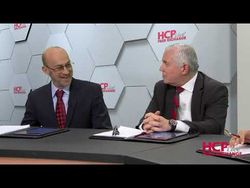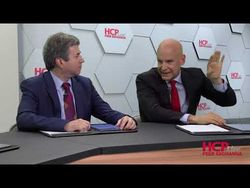Reducing Risk in Cardiovascular Events - Episode 3
Plaque-Prevention Measures
Deepak L. Bhatt, MD, MPH: But what sort of insights? You’ve done a lot of pioneering work, Steven, using intravascular ultrasound [IVUS]. What sort of insights does IVUS give us in terms of plaque, when it starts, what can affect its progression?
Steven E. Nissen, MD: First of all, 1 of the most eye-opening things that happened in my career was when we first started putting an intravascular probe in the coronary, about 1990 or so. I always thought of it as a plumbing disease. I thought the way some interventionalists maybe still think.
Deepak L. Bhatt, MD, MPH: Even doctors or people in general oftentimes still think of it as the pipes being clogged.
Steven E. Nissen, MD: You get a stenosis, and that causes symptoms. And you get a stent, and that makes the symptoms go away. But what happened was we started to put IVUS probes down the coronary, and every millimeter of the vessel was atherosclerotic. Most of the plaque was not intraluminal. It was remodeled outward, but the entire artery was atherosclerotic. And I did a study, with my colleague Murat Tuzcu, now in Abu Dhabi, who led that study—a really thoughtful, wonderful guy—and he did a bunch of IVUSs in fresh heart transplant recipients. He was looking at the donor hearts. The average age was about 30 years, and over half those hearts at age 30 had major plaques in the coronaries. So this disease starts very young. It’s part of the reason why I’ve come to this thought process about treating earlier, because we know the disease starts earlier. In fact, in his study, 1 of 6 teenagers who died in motor vehicle accidents, and we looked at them with IVUS. They had plaques on their coronaries—1 of 6 teenagers. So when patients come in with a myocardial infarction at age 45, or 50, or 55, this disease has been there for 30 years.
Deepak L. Bhatt, MD, MPH: Jamie, you do a lot of primary prevention. What are your thoughts? Because Steve is quite right: The plaque starts pretty early, even if you think back to the Korean War autopsy data, there’s plaque in young folks for sure, even ones who are ostensibly quite fit and healthy. Is this something we should treat on an individual level, a public health level, or both? What’s the role of diet and lifestyle? Is that going to be enough? Does it always have to be pharmacotherapy? What do you think? What do you do?
James A. Underberg, MD, MS: Well, first and central is actually screening, and not enough young people are getting screened at early ages to understand whether they’re at risk. I always remind people we screen as early as ages 9 to 11 in this country, yet it’s not getting done often in a lot of pediatric practices. That’s to pick up inherited forms of high cholesterol, which is much more common than people think. But when you add in lifestyle and consider diabetes happening at early ages now, not later in life, clearly the role for prevention is more than just putting people on medicines. It’s identifying risk factors and intervening as soon as possible. Diet and lifestyle do play a role. They play a role even in people with inherited disorders, and your colleagues at Harvard Medical School have shown very nicely that in people with inherited causes of early atherosclerosis, those who live heart-healthy lifestyles have a reduced risk. They don’t eliminate risk, but they reduce risk. It’s a combination of intervening with diet and lifestyle as early as possible. At the same time, intervening pharmacologically was necessary.
Michael Miller, MD: So it’s not an either-or.
Steven E. Nissen, MD: I want to circle back if I could just for a second, because we left it very quickly. And I’d like to hear what others have to say, but I’ve been very disappointed with how much I can move LDL [low-density lipoprotein] cholesterol with diet. As much as we all say diet and lifestyle first, why am I bringing this up? Because if you go to family practice and general internal medicine, everybody’s got it in your head when you see hypercholesterolemia, that you always should try diet and exercise first. And so some guy comes in at age 50 with tons of risk factors and an LDL of 150, and they said, “Well, your cholesterol is high. We’re going to try diet and exercise, and I’ll see you back in 6 months,” and maybe they don’t make the appointment for a year or 2, and the next thing you know they’re coming in with a myocardial infarction. Let’s be realistic here. Maybe, on average, you can get a 10% or 15% reduction in LDL with diet. That’s not trivial. It’s equivalent to a several-fold increase in statin dose.
What I tell patients is, “You should diet and do these other things because I may be able to control your LDL with 10 mg of atorvastatin if you do these other things. And it may take 80 mg of atorvastatin to control your LDL if you don’t do these things because of the rule of 6. Every time you double the dose, you get 6% more LDL lowering.” But I think it’s important that we communicate crystal clear to the generalists that with really high LDL, you’re not going to get them there unless you actually early on, you’ve got to go.
Deepak L. Bhatt, MD, MPH: You raised a great point. There are a lot of primary care physicians watching this program. We’ve got to make sure we give them a clear message.
Transcript edited for clarity.



